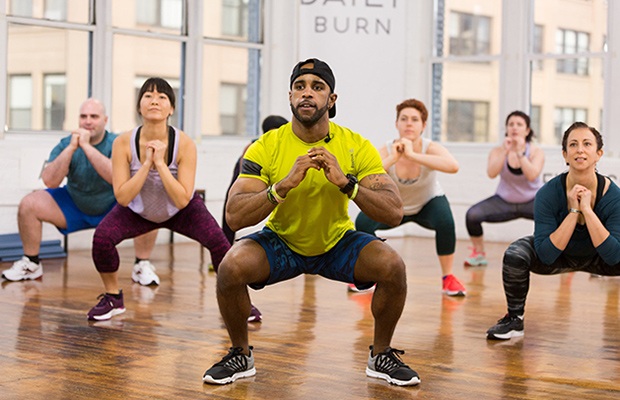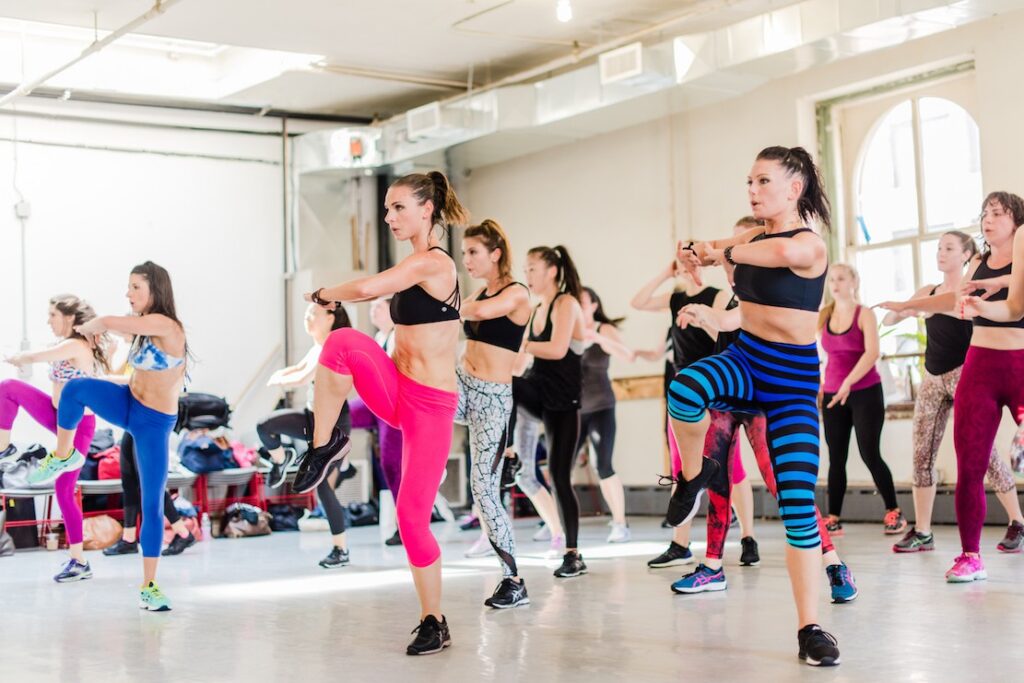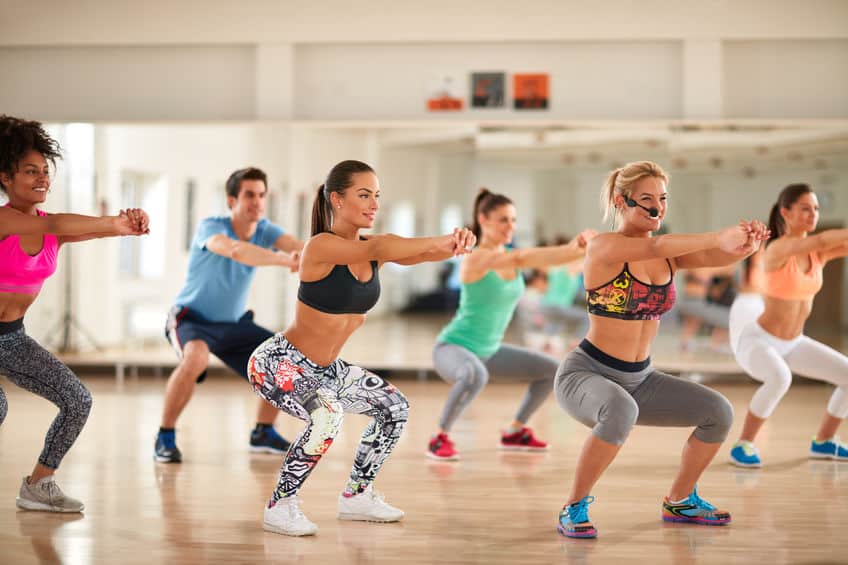Introduction
Cardio or Aerobic exercise is defined as any activity that causes your heart rate to rising and rising major muscle groups to contract. It is also known as cardiovascular activity at times. Aerobic activities include the following:
- brisk walking
- swimming
- difficult cleaning or gardening
- running
- cycling
- playing soccer
Usually suggested by experts to start with a short session of 15-20 minutes, and then gradually increasing the time of cardio. The more time you invest the better results you will get.
Experts advise 150 minutes of moderate aerobic exercise or 75 minutes of strenuous activity per week. Brisk walking or swimming are examples of moderate activity. Cycling and jogging are both strenuous activities.

But why is an aerobic exercise recommended? Continue reading to discover the advantages of aerobic exercise and how to include it in your daily routine.
Benefits of Cardio exercise
Improves cardiovascular health
The American Heart Association and the majority of doctors recommend aerobic exercise for people who have or are at risk of heart disease. This is because exercise strengthens your heart and allows it to more efficiently circulate blood throughout your body.
By boosting “good” high-density lipoprotein (HDL) cholesterol levels in the blood and decreasing “bad” low-density lipoprotein (LDL) cholesterol levels, cardiovascular activity can help lower blood pressure and keep arteries clear.
Aim for 40 minutes of moderate- to vigorous-intensity aerobic activity three to four times per week to lower your blood pressure and cholesterol.
Lowers blood pressure and Helps regulate blood sugar
Cardiovascular activity may alleviate the symptoms of high blood pressure. This is because exercising can help to lower blood pressure. Here are some other natural blood pressure-lowering methods.
Regular physical exercise aids in regulating insulin and reducing blood sugar levels while maintaining a healthy body weight. In a study of people with type 2 diabetes, researchers discovered that any form of movement, whether aerobic or anaerobic, may have these effects.
Aids sleep
If you have trouble sleeping at night, try doing some cardiovascular exercise during the day.
According to one research on adults with chronic sleep disorders, combining a regular exercise regimen with sleep hygiene training is an effective treatment for insomnia.
Participants completed questionnaires on their sleep and general mood after 16 weeks of aerobic training. The activity group had better sleep quality and duration, as well as increased day wakefulness and vitality.
Exercising too close to bedtime, on the other hand, may make falling asleep more difficult. Try to finish your workout at least two hours before bedtime.
Regulates weight
You’ve probably heard that food and exercise are the two cornerstones of weight loss. Aerobic exercise, on the other hand, may help with weight loss and maintenance.
Men and women both dropped significant amounts of weight, falling between 4.3 and 5.7 per cent of their starting weights. The majority of their workouts were spent walking or jogging on treadmills. If you don’t have access to a treadmill, try walking or jogging during your lunch break or before dinner.
To burn 400 to 600 calories, you may need to walk or jog up to 4 kilometres, depending on your weight and speed. Calorie restriction combined with physical activity can help you lose weight.

Boosts mood
Moving your body may also assist you in feeling better. Participants in one trial walked on a treadmill for 30 minutes at a time, executing intervals. After 10 days, they were asked to describe any changes in their mood.
All individuals reported a considerable reduction in their depressive symptoms. These findings suggest that even short bursts of exercise might have a major impact on mood.
It is not necessary to wait nearly two weeks to see an improvement. According to the study’s findings, a single gym session may be enough to give you a boost.
Affordable and accessible
Working out does not need the use of any special equipment or the purchase of a gym membership. Daily exercise might be as easy as a walk around the neighbourhood or a run on a nearby road with a friend.
See if there are any open swim periods at surrounding schools or community organisations. Many offer free or low-cost access to residents. Some gyms even provide free or low-cost workout classes to the general public.
On sites like YouTube, look for free workout videos. Popular channels include Fitness Blender, Yoga with Adriene, and Blogilates.
Check with your employer to see if there are any discounts or free memberships available at nearby gyms. If your company does not provide any incentives, your union may be able to help you get prizes.
Is Cardio exercise safe?
Yes, cardio exercise is generally safe but before starting a new workout plan, consult your doctor, there are a few scenarios in which you should visit a doctor.
Here’s an example:
- Exercise aids in the reduction of blood sugar levels. Check your blood sugar levels before and after exercise if you have diabetes. Eating a healthy snack before you start sweating will also help keep your levels from dropping too low.
- If you have muscular and joint pain, such as arthritis, spend more time warming up before commencing your workout. Consider taking a warm shower before putting on your shoes or going to the gym. Shoes with adequate cushioning and motion control can also be beneficial.
- Consult your doctor before beginning a new training regimen. While cardio exercise is typically safe, there are a few instances where you should consult with a doctor.
- Exercise helps to lower blood sugar levels. If you have diabetes, check your blood sugar levels before and after exercise. Eating a healthy snack before you begin sweating will also assist in keeping your levels from dipping too low.
- Warm up more before beginning your workout if you have muscular and joint pain, such as arthritis. Before putting on your shoes or going to the gym, consider taking a warm shower. Shoes with good cushioning and motion control can also help.
Cardio exercise
Cardiovascular exercise does not necessitate a lot of equipment. People can instead undertake a cardiac workout at home with their own body weight.
Adults should engage in 150-300 minutes of moderate physical exercise per week, according to the American College of Sports Medicine.

The exercises described here can be done almost anywhere, including at home, in a public park, or in an outdoor setting.
People can choose exercises based on their present level of fitness. As their fitness increases, they may graduate to harder movements.
Home workouts
Jogging in place
Jogging in place is a quick and easy approach to getting your heart rate up.
For beginners, this is also a wonderful warm-up activity.
Lightly bounce from one foot to the other to perform.
Swing your arms from side to side simultaneously.
Jumping jacks
Jumping jacks are a simple cardiovascular workout that can be done practically any place.
To complete:
- Starting with your feet hip-width apart and your arms at your sides, perform the following movement.
- Raise your arms out to the sides and straight in the air as you launch out with your feet apart.
- Jump back into your starting posture, landing softly on the balls of your feet and pulling your arms back into your body.
You can increase the intensity of the exercise by jumping higher or faster. They can also moderate the workout’s intensity by executing slower or smaller jumping jacks.
Supine snow angel (wipers) exercise
This workout should be done to emphasise the abdominals, chest, and shoulders.
To complete:
- Lie on your back and place your feet flat on the ground.
- Tuck your pelvis forward, putting your lower back on the floor.
- Extend the arms from the shoulders, bending the hands slightly toward the ears.
- Raise your hands cautiously toward your head to meet.
- Lower your hands to return to the starting position.
Intermediate exercise
Squat jumps
Squat leaps are an excellent way to strengthen the glutes, quadriceps, hamstrings, and calves while raising the intensity of your workout.
To accomplish:
- Place your feet hip-width apart and your arms at your sides.
- Squat with your knees bent.
- From a squat, jump into the air and extend the hips until the body is straight.
- Land softly on your toes, rolling backwards to reduce heel shock.
- Repeat the exercise with different arm movements to increase the effort.
“Screamer” lunges
Screamer lunges work the legs while also putting the heart to the test.
To accomplish:
- Your feet should be hip-width apart.
- With your right leg, return to a lunge stance.
- By pushing off with the right foot and jumping in the air, raise the right knee to hip height.
- Return to the starting position with your right foot and do 10 lunges on one side.
- Rep with the left leg.
Lateral shuffles
This shuffling motion is akin to a warm-up for football or speed skating.
To accomplish:
- Begin by squatting slightly at one end of the room.
- Shuffle to the other side of the room, meet your feet, and then shuffle out and forth again.
- Raise the squat depth and tempo to increase the intensity of the workout.
Advanced exercises
Mountain climbers
Mountain climbers are a more demanding workout that works the entire body, especially the lower portion.
To accomplish:
- Start in a pushup position, with your right leg extended backwards and your left leg close to your chest, toes on the ground.
- Change leg positions quickly while maintaining your hands on the ground and your hips level.
- As needed, alternate the legs.
Inchworms
The inchworm is a full-body workout that strengthens and enhances mobility in the shoulders.
To accomplish:
- Begin in a standing position and reach down to briefly touch your toes before walking your hands out to a pushup stance.
- Push up, then walk your feet toward your hands and bring your hips upwards, similar to a downward dog.
- Return to the pushup position by bringing the feet as near to the hands as possible.
Burpees
Burpees are a challenging full-body workout that raises the heart rate.
To accomplish:
- Begin in a pushup position with your body.
- Squat by pushing off the balls of the feet and drawing the knees into the chest.
- Jump out of the squat, raise your hands in the air, and gently return to the squat.
- Return the hands beneath the shoulders to the floor.
- Return to the starting position by springing your legs back.
If a person wants to boost their effort, even more, they can use a Bosu ball, which is a form of an exercise ball.
Considerations for safety and injury prevention
Simply because someone is at home does not guarantee they are safe. Among the steps to ensure safety is:
- Enabling ample room for moving into the house
- Warm up for at least 5 minutes with low-impact exercises to get your heart rate up and your muscles warmed up.
- Take frequent water breaks to stay hydrated.
- Paying attention to your body and staying within your maximum heart rate range
- Stretching and cooling down muscles after a workout

Consult with a doctor before beginning an exercise regimen to avoid future health risks or escalation of any current difficulties.
Summary
Cardiovascular exercise can be an important part of a person’s training routine. A home workout might comprise a variety of activities of varying degrees of intensity. People may choose to include a variety of difficulties when designing a cardiac program.
